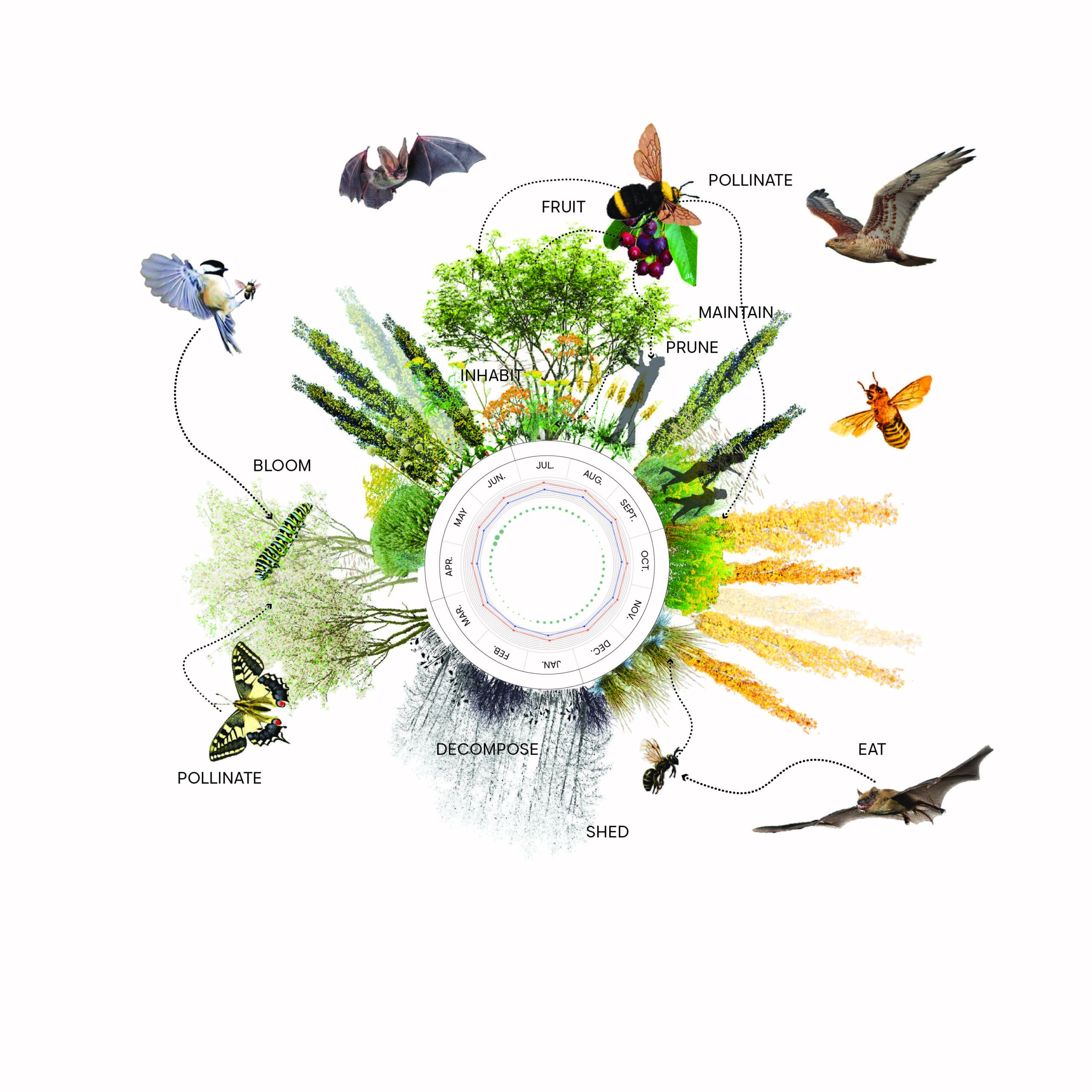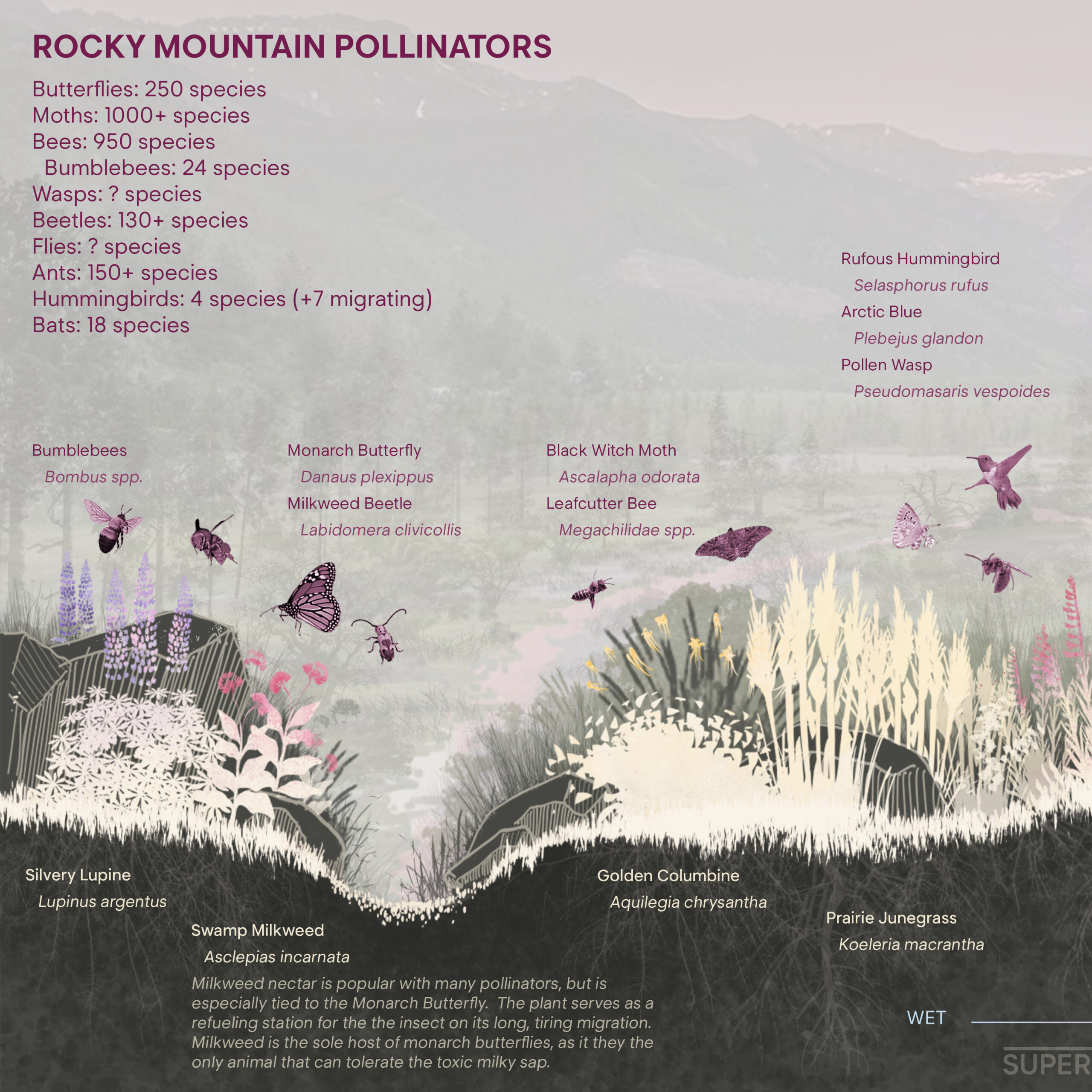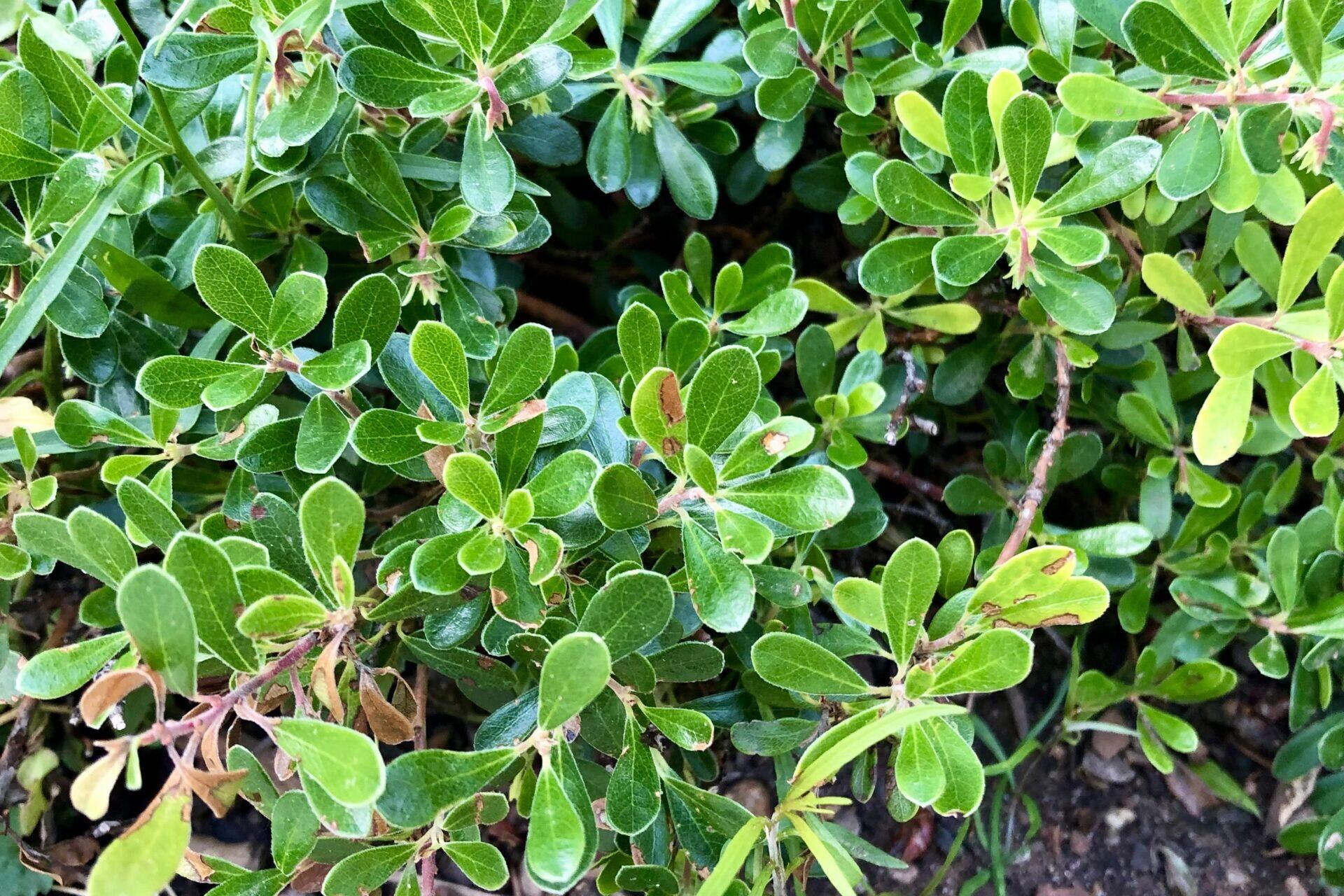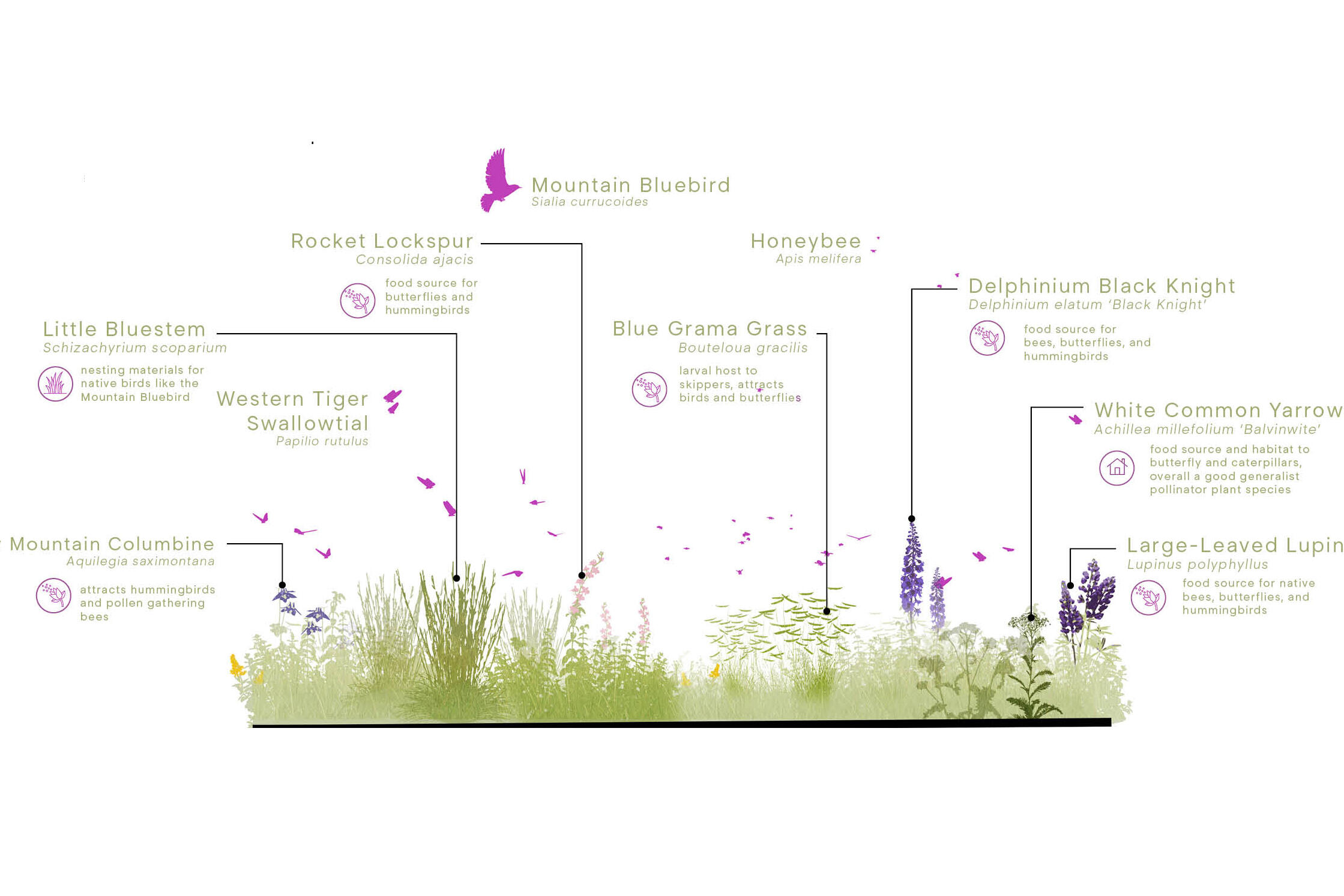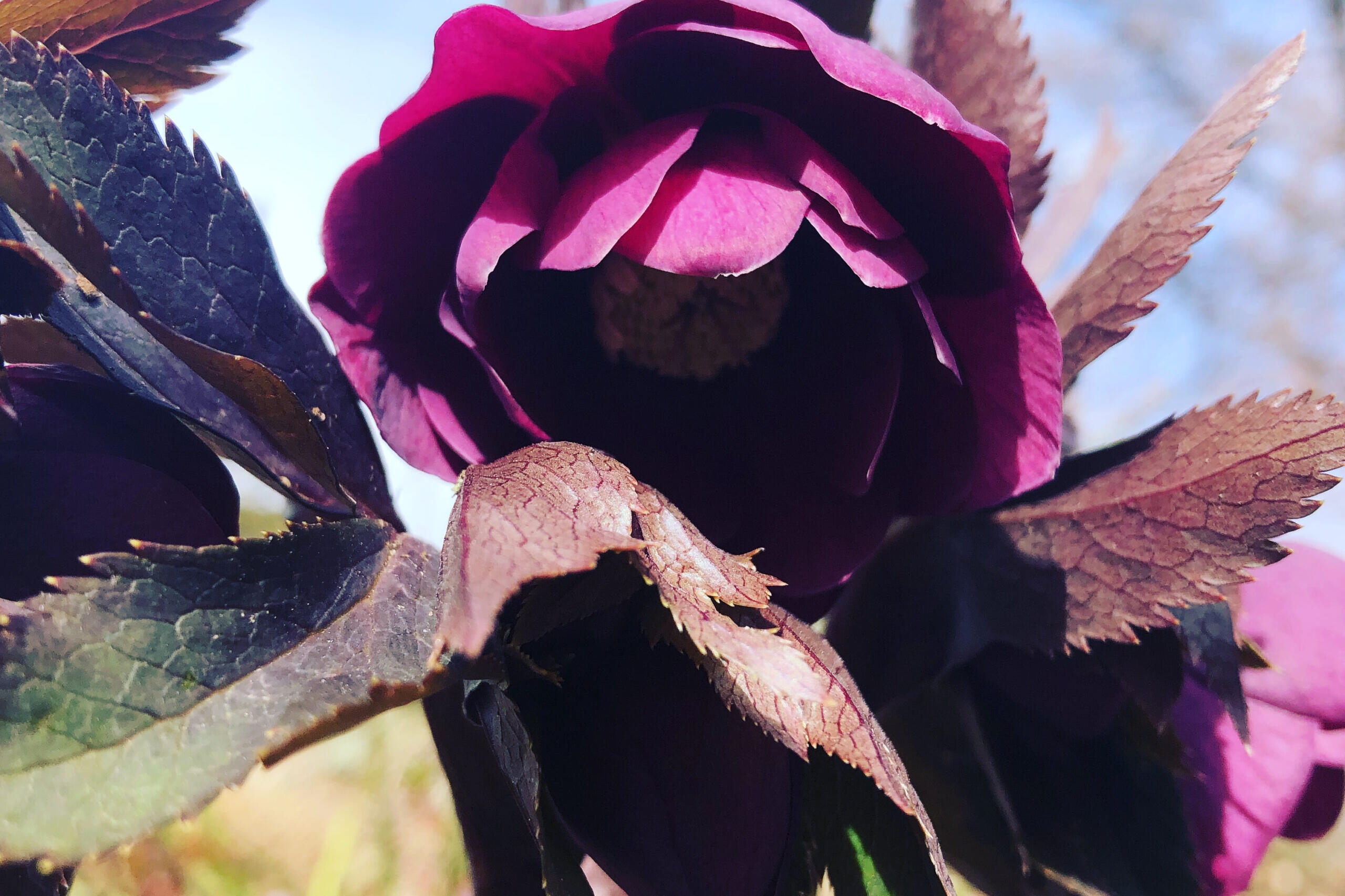Bee-ing aware of current challenges and taking action: According to the USDA, nearly 3⁄4 of the world’s flowering plants and 35% of our food producers need animal pollinators to survive. From fostering education on alpine ecology with native plants at the new Wild Bear Nature Center in Nederland, Colorado, to creating a supportive micro-climate on the 14th level of the Populus Hotel Green Roof in downtown Denver, to utilizing waterwise perennials, grasses and shrubs at Castle Rock’s Cloud Bosque and incorporating colorful habitat bands at Mill Creek Park in San Miguel County, we strive to incorporate pollinator habitat into each of our projects.
We attended the 2022 Annual Colorado Pollinator Summit, hosted by the Butterfly Pavilion at the Denver Botanic Gardens this past November for insight and current research on supporting pollinator habitat through landscape design. I was able to represent the Superbloom team and the conference to grow our knowledge and meet with our local experts doing really important work in this field. We’re excited to share some of the highlights we took away from the talks by Sarah Red-Laird, Dr. Stephen Buchmann, Dr. Keng-Lou James Hung, Dr. Christy Briles, and Dr. Michael Garber:
All about the Bees!
Out of the 20,000 bee species found worldwide, 946 are native to Colorado. The hive-loving honey bee gets the lion’s share of the publicity, but 70% of the natives are soil-nesters. The soil nesting process (bioturbation) is an extremely valuable natural soil aerator and fertilizer: when bees tunnel into the ground, their honeydew droppings fertilize and the newly created air pockets oxygenate the soil.
- Who doesn’t love a good jar of local honey? But good honey isn’t made in expertly-detailed hives alone. Honey bees benefit from biodiversity, and native plants love a good native bee visit. So the more native plants, the stronger the native bee population, hence the honey bees are stronger as well.
- Honey bees visit abundant flowering plants more often, while native bees visit the less abundant flowering plants (ie, our nuanced natives) more often. Honey bees love big patches of these floriferous showstoppers, but diversifying the patches and varying locations will deter honey bees from taking over the food sources for native bees.
- The global decline of pollinators as a whole has been likened to a “death by a thousand cuts” by Dr. Stephen Buchmann. Loss of habitat, pollution, climate change, pesticides and intensive agricultural management, invasive alien species, night lighting, traffic, etc. – all of these play a role in the loss of pollinators.
- Today, there are fewer than a dozen commercial beekeepers in the United States. (Dr. Christy Briles)
- 2.5 million honey bee colonies were kept in the US in 2022. This is down from 6 million in 1947. Biodiversity reduction is a key factor in the decline, but substantial loss is also attributed to the mysterious Colony Collapse Disorder.
- If bees are important to you, and the use of pesticides, insecticides, fungicides, and herbicides in agriculture harms our tiny friends, vermicompost and vermiculture are awesome alternatives that are increasingly becoming more in use. If you have farmer friends, or a small plot of your own, check out the resources linked at the end of this post.
- Let’s make Farm Bathing & Backyard Bathing a thing. (It’s a riff on Forest Bathing, which is something we also love to do in our client’s backyard at Bluff Lake Nature Center, here in NE Denver).
Every small action we do in the name of pollinators matters – no action is too small! Participate in No Mow May; send in your sightings to Bumble Bee Watch; volunteer with Xerces Society; or contact your state legislators to call for beehive registration and to consider apiary regulations (similar to aviaries). Or just get to talking about it with your friends! Then tell us about it – we’d love to hear what you’re up to @studiosuperbloom. All these efforts can help create pollinator habitat that is useful for yourselves and for future generations.
Sources/References:
- Bee Girl
- Bumble Bee Watch
- Colorado Agrivoltaic Center
- Colorado Pollinator Network
- Xerces Society
- Colorado Department of Agriculture for Bee Laws
- Dr. Stephen Buchmann has authored a ton of books on pollinators through different lenses worth perusing.
- Images by Superbloom: Speer Vision Plan, Populus Green Roof & Mill Creek Park


